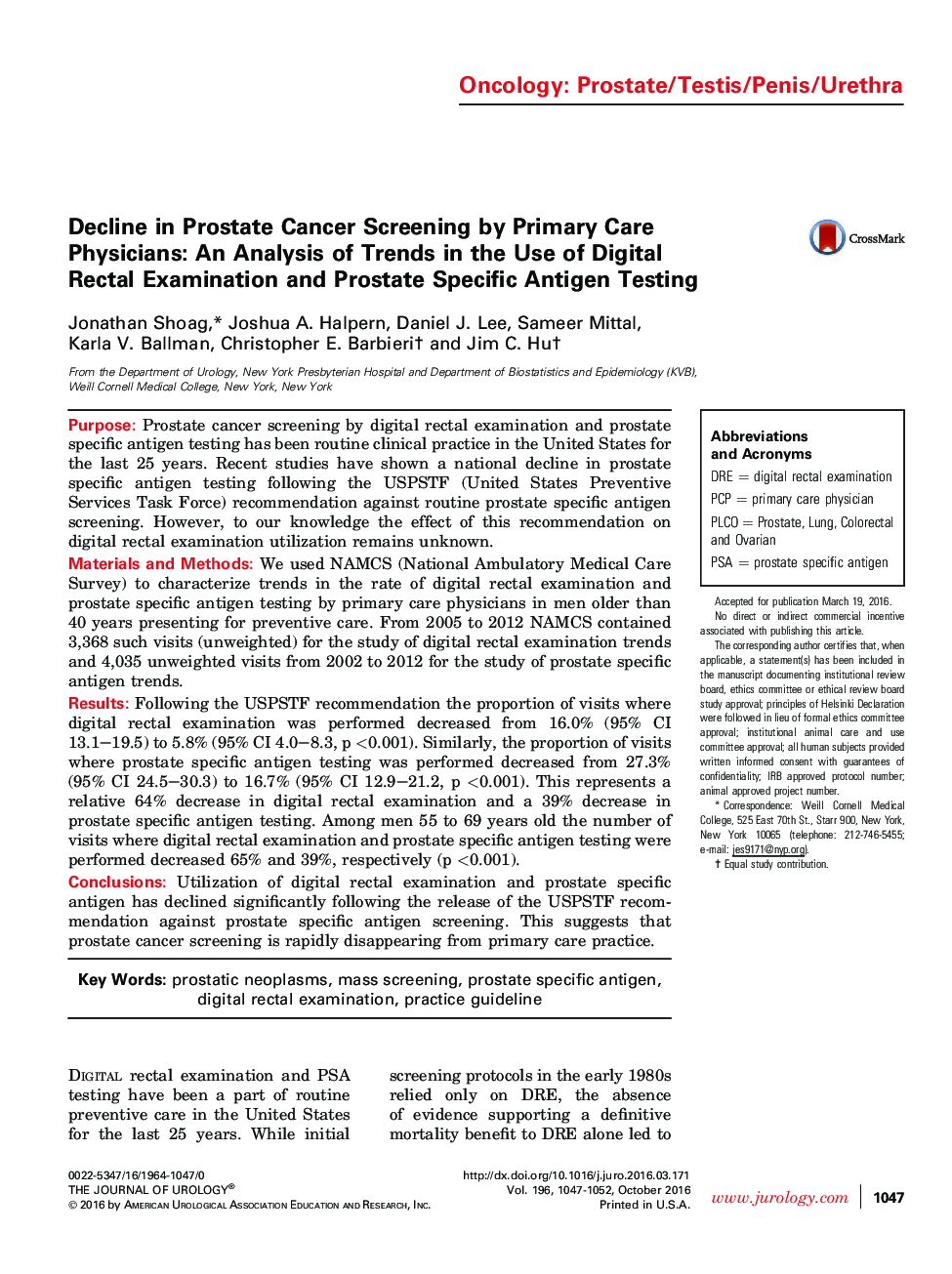| Article ID | Journal | Published Year | Pages | File Type |
|---|---|---|---|---|
| 3857715 | The Journal of Urology | 2016 | 6 Pages |
PurposeProstate cancer screening by digital rectal examination and prostate specific antigen testing has been routine clinical practice in the United States for the last 25 years. Recent studies have shown a national decline in prostate specific antigen testing following the USPSTF (United States Preventive Services Task Force) recommendation against routine prostate specific antigen screening. However, to our knowledge the effect of this recommendation on digital rectal examination utilization remains unknown.Materials and MethodsWe used NAMCS (National Ambulatory Medical Care Survey) to characterize trends in the rate of digital rectal examination and prostate specific antigen testing by primary care physicians in men older than 40 years presenting for preventive care. From 2005 to 2012 NAMCS contained 3,368 such visits (unweighted) for the study of digital rectal examination trends and 4,035 unweighted visits from 2002 to 2012 for the study of prostate specific antigen trends.ResultsFollowing the USPSTF recommendation the proportion of visits where digital rectal examination was performed decreased from 16.0% (95% CI 13.1–19.5) to 5.8% (95% CI 4.0–8.3, p <0.001). Similarly, the proportion of visits where prostate specific antigen testing was performed decreased from 27.3% (95% CI 24.5–30.3) to 16.7% (95% CI 12.9–21.2, p <0.001). This represents a relative 64% decrease in digital rectal examination and a 39% decrease in prostate specific antigen testing. Among men 55 to 69 years old the number of visits where digital rectal examination and prostate specific antigen testing were performed decreased 65% and 39%, respectively (p <0.001).ConclusionsUtilization of digital rectal examination and prostate specific antigen has declined significantly following the release of the USPSTF recommendation against prostate specific antigen screening. This suggests that prostate cancer screening is rapidly disappearing from primary care practice.
